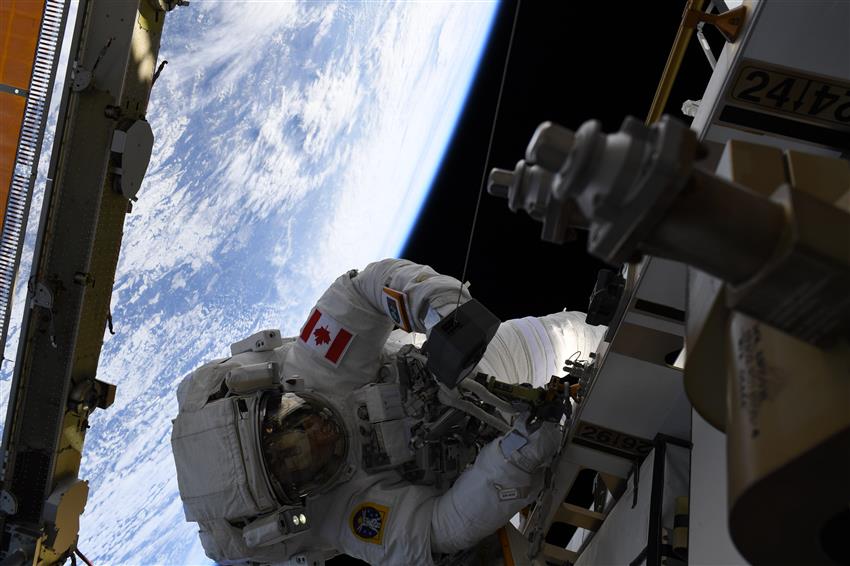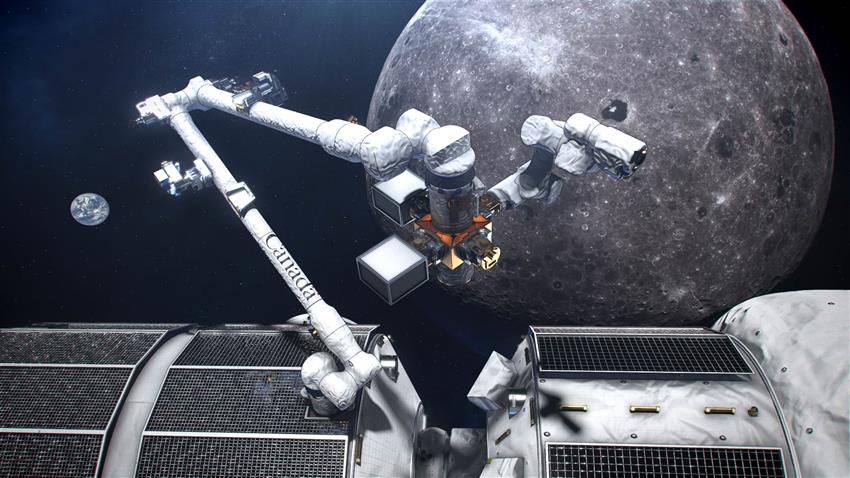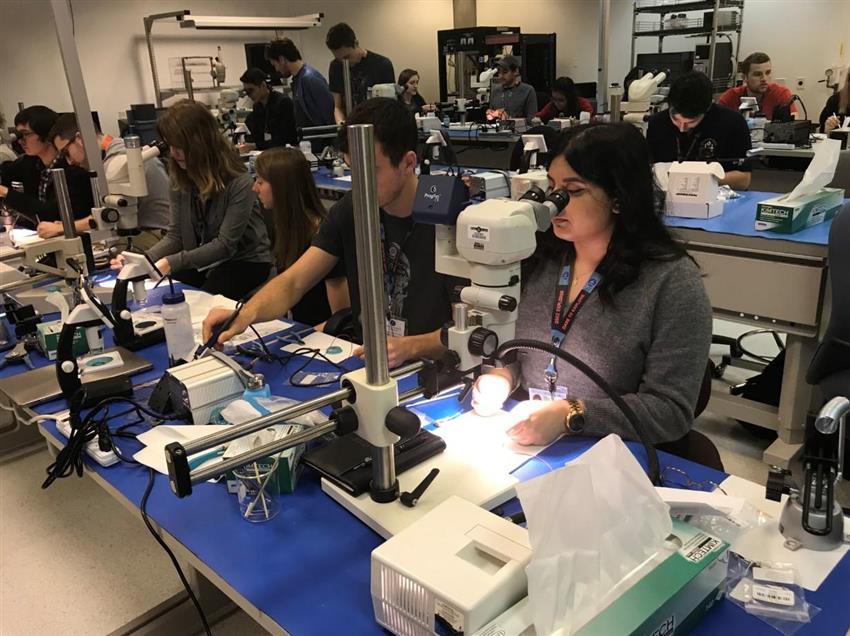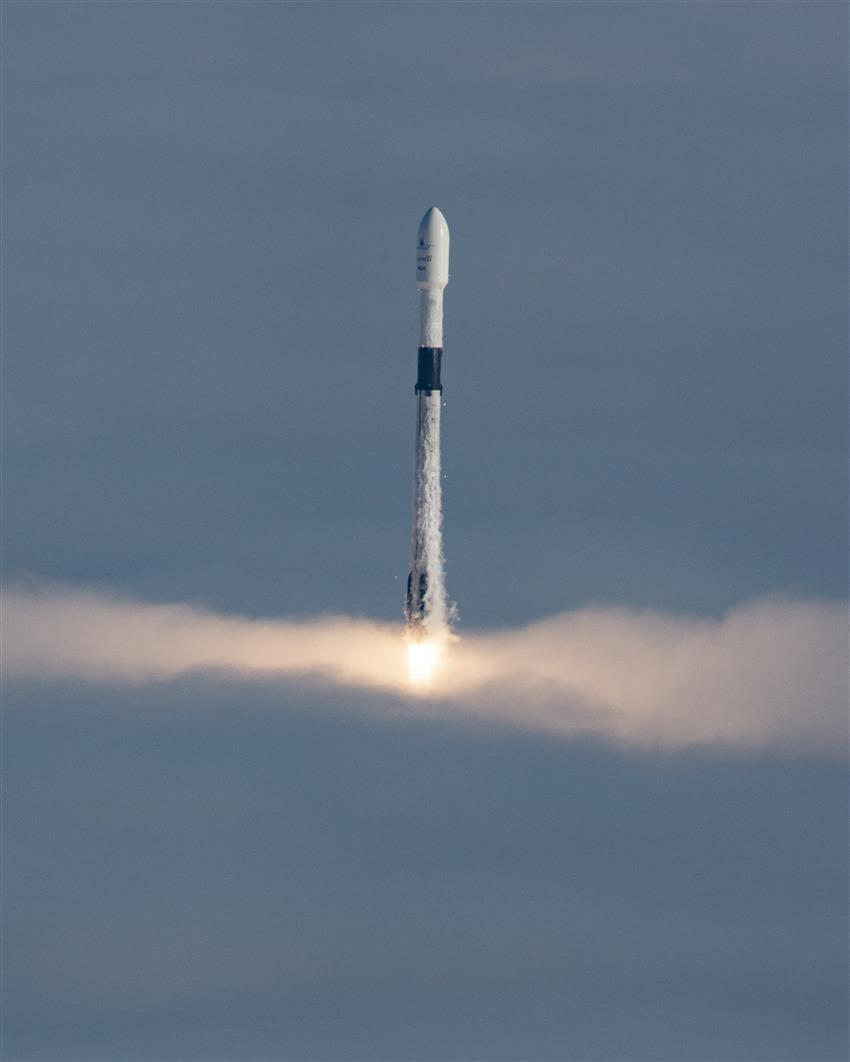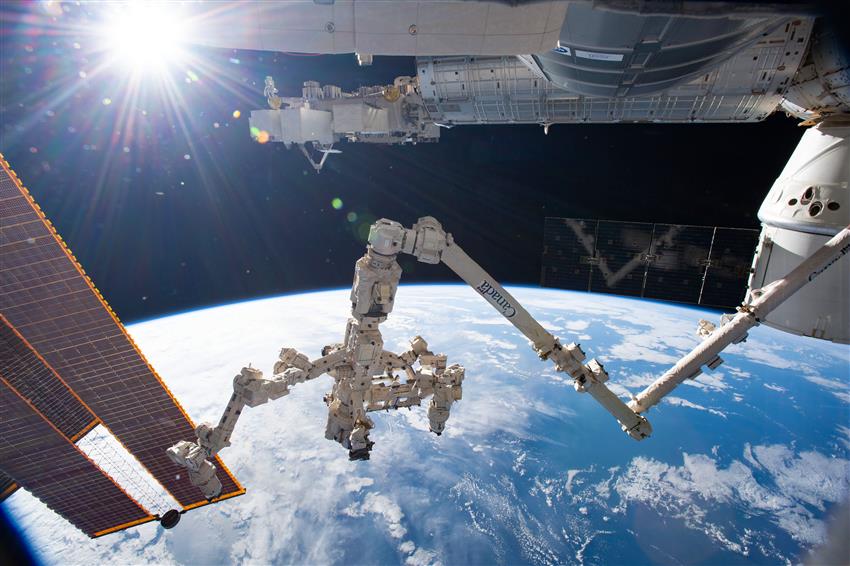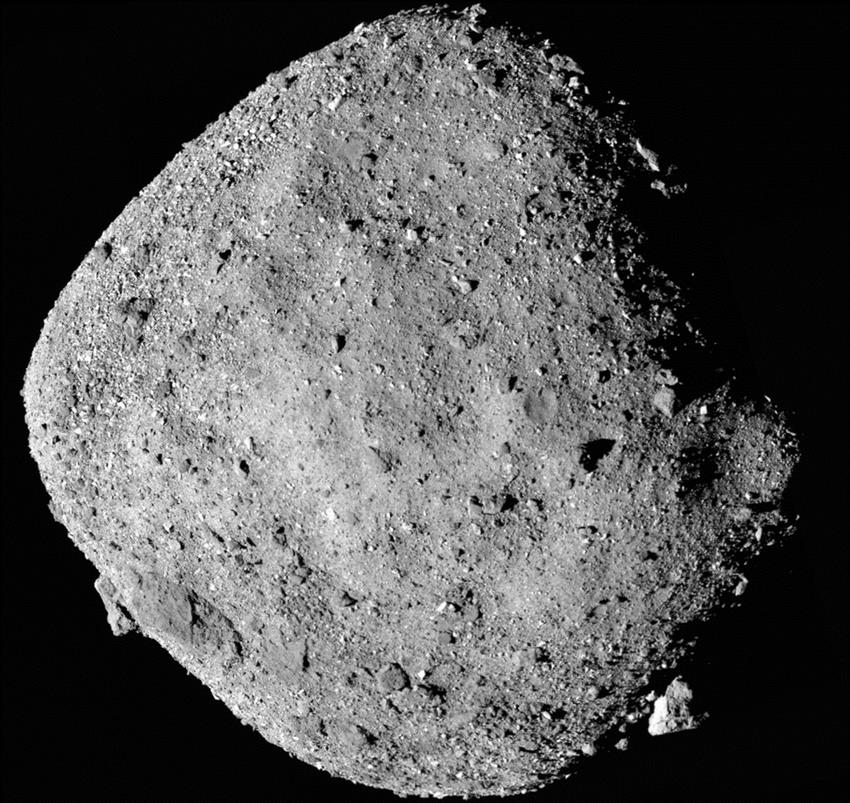Top 10 highlights of 2019
2019 was a year of amazing achievements for Canada in space. From announcing our participation in Moon exploration to sending a Canadian Space Agency (CSA) astronaut to the International Space Station (ISS) and a new generation of Earth observation satellites into orbit, 2019 was a year to remember. Here are some of the year's biggest moments:
David Saint-Jacques' mission
to
CSA astronaut David Saint-Jacques spent a total of 204 days in space, connecting with Canadians across the country to invite us all to appreciate the beauty and fragility of our planet and to encourage young people to develop an interest in science, technology, engineering and mathematics. David conducted a spacewalk, became the first Canadian to operate Canadarm2 for a cosmic catch, and was the first astronaut to enter SpaceX's Crew Dragon spacecraft. David's journey came to an end on June 24, making his the longest CSA astronaut mission to date.
Canada reaches for the Moon
Canada confirmed its participation in the US-led Gateway, the next chapter of Moon exploration. This small space station in lunar orbit will include a Canadian-built smart robotic system, Canadarm3, and a new program for innovative Canadian science and technology on the Moon's surface, in the lunar vicinity, and beyond.
Canada's Space Strategy is unveiled
For over six decades, our country has emerged as a key international partner and contributor to human space flight, space exploration, Earth observation and space science. Canada's new space strategy aims to leverage Canadian strengths like Earth observation, robotics and satellite communications while advancing science and innovation in burgeoning areas like artificial intelligence and biomedical technologies.

Canada's Space Strategy. (Credit: CSA)
CubeSat student workshops
to
The Canadian CubeSat Project provides teams of students in post-secondary institutions with the unique opportunity to design and build their own miniature satellite called a CubeSat. In the spring, all of the 15 CubeSat Project teams met for the first time when they came to the CSA's headquarters to attend training sessions with our experts and to present their projects to their peers.
Simulated lunar sample return mission
The CSA partnered with the European Space Agency to conduct a series of field tests to replicate a lunar sample return mission. The Lunar Exploration Analogue Deployment (LEAD) field tests put the CSA's Juno rover prototypes in harsh environments to test navigation systems, practise collecting samples, validate the time and tools needed to execute specific rover operations, and identify possible problems.
Launch of the RADARSAT Constellation Mission
The RADARSAT Constellation Mission satellites were launched aboard a SpaceX Falcon 9 rocket from Vandenberg Air Force Base in California. The three identical satellites work together to monitor and protect our environment and oceans, manage our natural resources, and ensure the safety and security of Canadians.
Kick-off of the Junior Astronauts educational campaign
The CSA launched its Junior Astronauts campaign, a series of activities to get young Canadians excited about space and science. Four Canadian youth from every province and territory will be selected to participate in a week-long camp at the CSA. Eligible teachers, educators and youth group leaders can also win a visit from an astronaut or space expert for their school or organization.

Junior Astronauts educational campaign. (Credit: CSA)
Canadian space robot Dextre expands its ability to refuel satellites and spacecraft in orbit
and
Dextre, Canada's robotic handyman on the ISS, demonstrated how robots could refuel satellites and spacecraft with cryogenic fluids to extend their useful lifetimes. Being able to robotically refill these gases in liquid form while in orbit would enable longer exploration missions further from Earth.
Strato-Science 2019
to
The CSA's stratospheric balloon program, STRATOS, provides Canadian academia and industry with an opportunity to test new technologies and perform science in a near-space environment while inspiring and training the next generation of experts. For this year's edition, four stratospheric balloons carrying 11 Canadian payloads and two smaller balloons were launched from the Timmins Stratospheric Balloon Base. One of the stratospheric balloons was recovered about 900 km from the Timmins launch site, a record-breaking distance for the CSA!
Canadian laser plays a crucial role in helping the OSIRIS-REx mission choose its final sample site
After spending a year studying asteroid Bennu's boulder-scattered surface, the team leading NASA's first asteroid sample-return mission officially selected a sample collection site. An area known as “Nightingale” was officially chosen as OSIRIS-REx's final site to collect a sample for return to Earth. The Canadian OSIRIS-REx Laser Altimeter, or OLA, scanned the asteroid's surface to create high-resolution 3D maps that were crucial to help mission scientists select the best site. As the mission progressed, scientists discovered that Bennu's surface was much more rugged than initially expected. Without OLA data, the selection of a sample site would have been even more complex. The Canadian instrument produced the most detailed three-dimensional measurements of a celestial body, vital for such a challenging mission.

